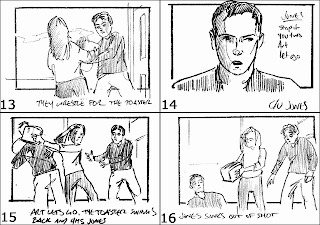We used the Camera test primarily to see if the actors we had chosen to play in our band looked the part in front of the camera. The first thing that we were looking for was to see if the cast were photogenic. If they looked bad on Camera, or didn’t look like we imaged they would, we would then choose someone else. We were also looking to see if the actors were willing to be directed, and were willing to do exactly what we wanted them to do, because if they were nor, they we would have to get rid of them.
What we found was that our actors worked out just right. They all looked photogenic, they all suited their part and they were all willing to do what we wanted them to do. Because of this we didn’t need to try and find any other actors.
















